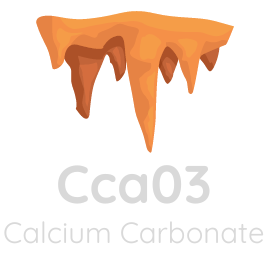
Calcium carbonate (CaCO3) and calcium oxide (CaO) are two closely related chemical compounds that play significant roles in various industries. While they share a common element, calcium, they exhibit distinct properties and applications.

Calcium Carbonate (CaCO3)
Calcium carbonate is a naturally occurring mineral commonly found as limestone, chalk, and marble. It is composed of one calcium atom, one carbon atom, and three oxygen atoms. CaCO3 is a white, crystalline solid that is insoluble in water.
Key Properties of Calcium Carbonate
- Chemical Formula: CaCO3
- Molar Mass: 100.09 g/mol
- Appearance: White crystalline solid
- Solubility: Insoluble in water
- Thermal Decomposition: Decomposes upon heating to form calcium oxide (CaO) and carbon dioxide (CO2).
Applications of Calcium Carbonate
Calcium carbonate has a wide range of applications, including:
- Construction: Used as a component in cement, mortar, and plaster.
- Paper Industry: Employed as a filler and pigment in paper products.
- Plastics Industry: Added to plastics as a filler to improve properties like stiffness and heat resistance.
- Pharmaceutical Industry: Used as an excipient in tablets and capsules.
- Food Industry: Utilized as an anticaking agent, acidity regulator, and calcium supplement.
- Agriculture: Applied to soil as a liming agent to neutralize acidity.
Calcium Oxide (CaO)
Calcium oxide, also known as quicklime, is a white, crystalline solid formed by the thermal decomposition of calcium carbonate. It is composed of one calcium atom and one oxygen atom. CaO is highly reactive and readily reacts with water to form calcium hydroxide (Ca(OH)2).
Key Properties of Calcium Oxide
- Chemical Formula: CaO
- Molar Mass: 56.08 g/mol
- Appearance: White, crystalline solid
- Reactivity: Highly reactive with water and other substances
- Uses: Primarily used in the construction industry as a component in cement and mortar.
Relationship Between CaCO3 and CaO
Calcium carbonate and calcium oxide are interconverted through a chemical reaction. When calcium carbonate is heated to temperatures above 800°C, it decomposes into calcium oxide and carbon dioxide:
CaCO3(s) → CaO(s) + CO2(g)
Conversely, calcium oxide can react with carbon dioxide to form calcium carbonate:
CaO(s) + CO2(g) → CaCO3(s)
Percentage of CaCO3 and CaO
The percentage of CaCO3 and CaO in a sample can be determined through various analytical techniques, such as:
- Acid-Base Titration: This method involves reacting the sample with a standard acid solution to neutralize the calcium carbonate. The amount of acid used can be related to the percentage of CaCO3.
- X-ray Fluorescence (XRF): XRF can be used to determine the elemental composition of a sample, including the concentrations of CaCO3 and CaO.
- Thermogravimetric Analysis (TGA): TGA can be used to measure the weight loss of a sample as it is heated, which can be correlated to the decomposition of CaCO3 into CaO.
The percentage of CaCO3 and CaO in a sample is important for various applications, such as determining the purity of calcium carbonate products and evaluating the effectiveness of lime-based treatments in agriculture and construction.
read more : Daily Production Output of a Calcium Carbonate Factory




